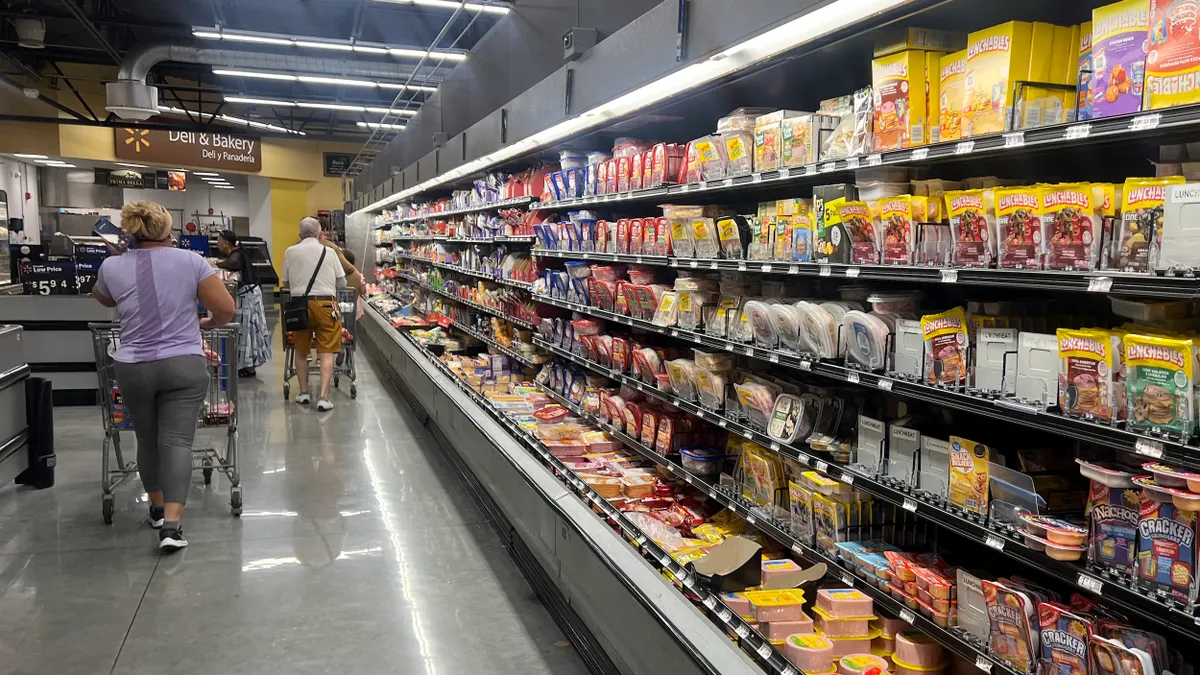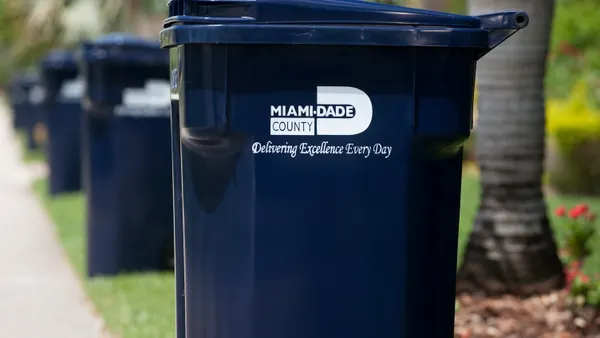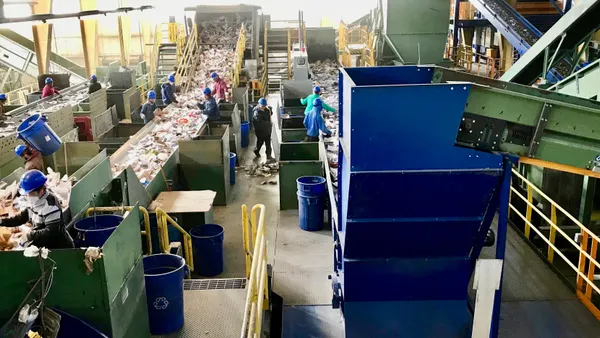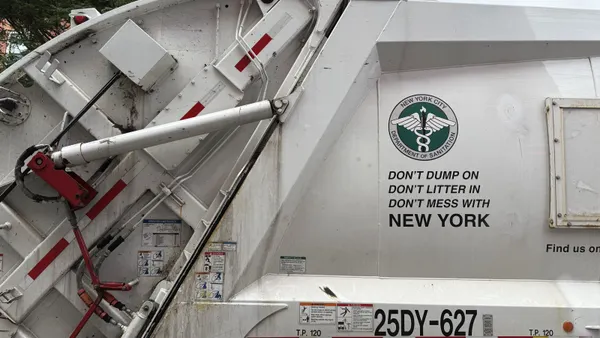UPDATE Feb. 23, 2018: This year, the Super Bowl achieved a 91% diversion rate, marking the highest diversion rate for any event at U.S. Bank Stadium and for any Super Bowl, according to PepsiCo and the NFL.
Nearly 63 tons (out of 69 generated tons) of waste from the event were diverted. Jack Groh, director of the NFL Environmental Program, told Waste Dive in an email that the diversion would have been more difficult to achieve had the stadium not done "trial runs" during the regular Vikings season to learn where weaknesses were and “correct procedures” before the Super Bowl.
"It was a great team effort in every sense of the word 'team,'" he wrote.
In total, 6.37 tons of trash was sent to a waste-to-energy facility, 20.6 tons were composted, 12.36 tons of bottles and cans were recycled and 7.92 tons of cardboard or paperboard were recycled.
Other categories of discarded items, like prepared food, pallets and electronics, were donated.
Dive Brief:
- The NFL, PepsiCo and the U.S. Bank Stadium are co-partnering with vendors to "Rush2Recycle" and divert at least 90% of waste generated during the Super Bowl game Sunday, Feb. 4. The "zero waste" efforts include converting food service utensils to compostable material, making use of a new compactor and staffing the stadium with "recycling ambassadors."
- Roberta Barbieri, PepsiCo vice president of global water and environmental solutions, told Waste Dive in an email the company had hired around 200 students to be "recycling ambassadors" who will help fans and spectators properly sort their material for disposal. PepsiCo also worked with the stadium and Recycle Across America to relabel and clearly mark bins. Recycling and composting bins are larger than trash bins that are sent for processing at WTE facilities.
- Patrick Talty, SMG general manager of U.S. Bank Stadium, told Waste Dive in an email that all organic material collected during the game is converted to compost, not sent for digestion. Cooking grease is recycled in other ways. The stadium installed a dedicated organics compactor in September last year.
Dive Insight:
It's increasingly common for events and venues to include waste diversion as part of their billing, from Waste Management's golf tournament in Phoenix, to the Philadelphia Marathon. The Super Bowl is likely the most high-profile event to engage in "zero waste" messaging, and the message will be clearly sent with advertising for the goal playing on screens at the stadium.
While organizers are focusing as much as possible on diversion, some refuse will go to WTE, which critics say creates a false impression of "zero waste." Whether 100% diversion from landfill is possible without some WTE remains the subject of debate in the industry and the city. Minneapolis is home to a WTE facility owned by Hennepin County that is located adjacent to Target Field and provides steam for the baseball stadium. To some this is a symbol of efficient city planning, to others it highlights a legacy of environmental justice issues.
All that being said, the 2018 Super Bowl is not U.S. Bank Stadium or the NFL's first foray into waste diversion, and it is not poised to be their last. The organics compactor purchased at U.S. Bank Stadium was installed for long-term use, not only for Sunday's game and the Philadelphia Eagles, as an example, plan to install a BioHiTech Global digester in the near future. The NFL sponsored an annual e-waste event in October that diverted more than 42,000 pounds of e-waste from landfill for recycling. Last year's game in Houston saw months of preparation to increase diversion, too.
While the waste industry has to play a leading role in developing a circular economy, it cannot be the only sector involved. To truly achieve public buy-in, governments, the waste industry and corporate entities, like PepsiCo and the NFL (in this case) must work together to change attitudes.









